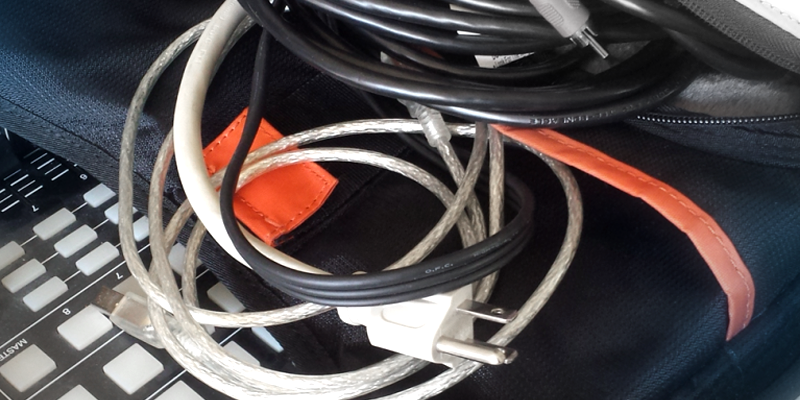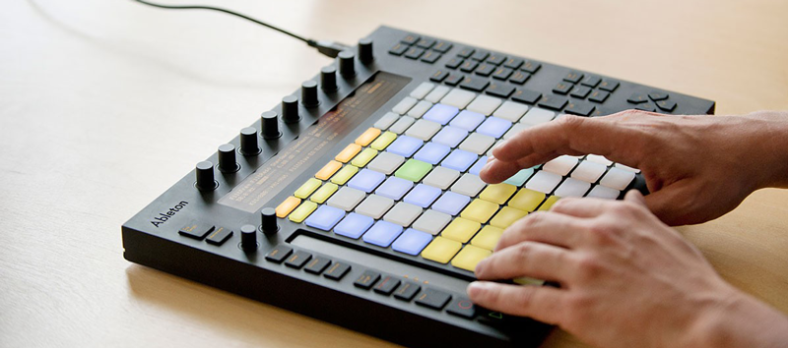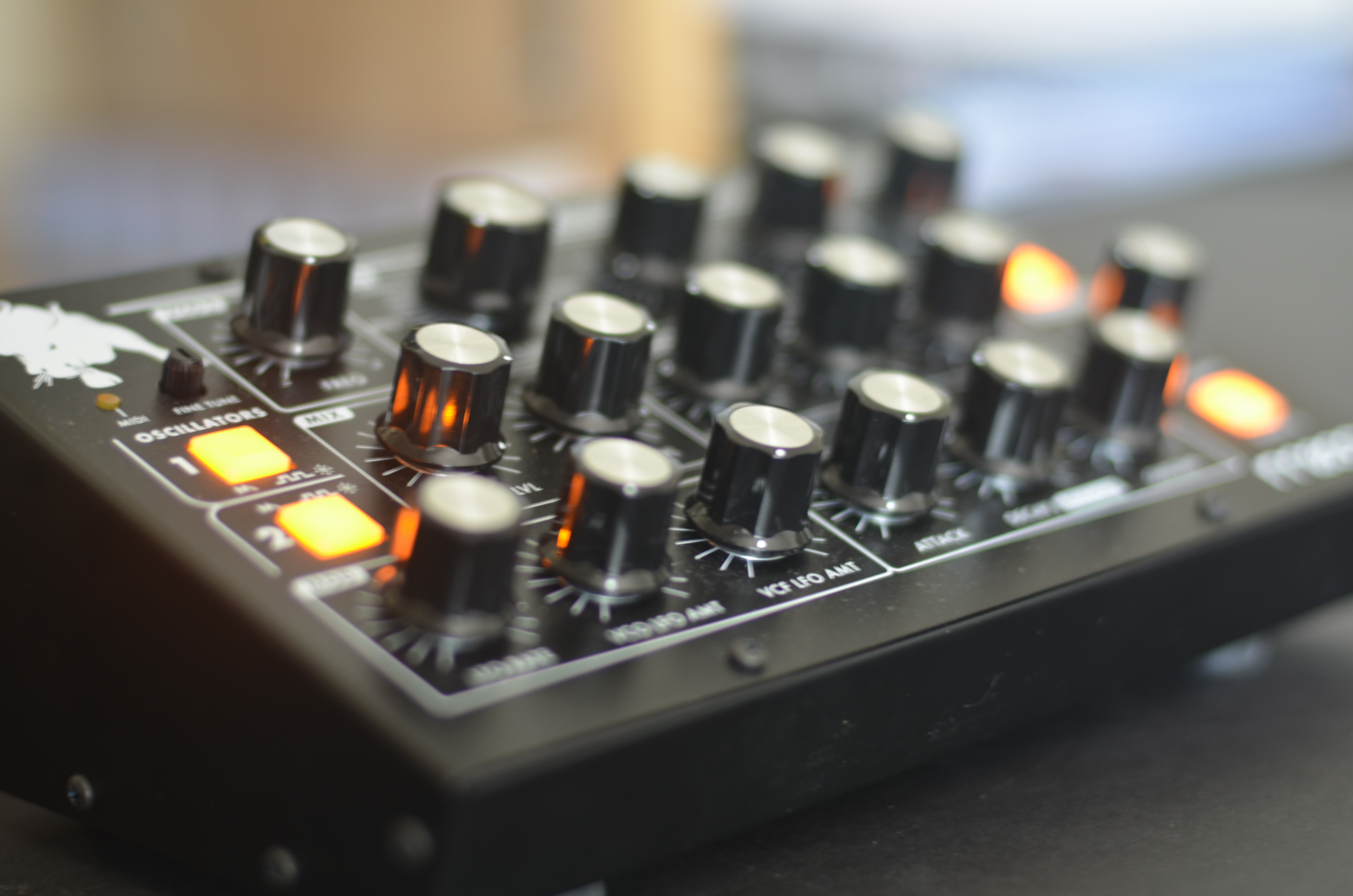There are a few situations where it’s better to walk into your local music store, to get your hands- and ears-on that piece of gear you’re considering, prior to purchase. Whether you pick it up there in person, or find it cheaper online, at least you’ve got yourself a better understanding of the build, feel, and quality of that next purchase – before it arrives.
With numerous online retailers like Amazon & Sweetwater offering daily deals on DJ & studio equipment, plus free shipping, it can be really tempting to purchase all your gear online. Since many offer extended warranties, how could you go wrong?
Although flipping thru a JPEG carousel of a new MIDI controller may be exciting, it’s not nearly as gratifying as experiencing it in person.
Most of us learn about new gear from fellow DJ/producers, friends, blogs and reviews. We’ll do just enough research to check all the boxes: that it’s Ableton-compatible, fully customizable, bus powered, has multi-colored LEDs, spongy pads, countless rotaries and encoders, etc., etc. We triple-check the dimensions to ensure it’ll squeeze onto our desk, or fit in a backpack. We watch enough YouTube videos to imagine ourselves making even better tutorials. We get lost in user forums where trolls bicker about its shortcomings. But we’ve already rationalized the purchase decision. It’s inevitable. “That thing is gonna take me to the next level.”
But what’s it really going to be like?
In my experience, there is something missing when shopping for gear online: and that is, what it’s really going to be like once that bad boy is turned-on and fully operational. This is why I walk into my local Guitar Center before I make a significant purchase, or every few months, just to see what’s new.
Using your senses
Sight
Getting your eyes on a piece of gear in person is very different than shopping online. This is the real deal, in physical form. You’re no longer relying on the glossy product shots the manufacturer provides.
In a store, you can see the finish of the material: the shine, the texture, the rubber, metal, plastic and/or wood. The positioning, relationship and distance between each knob and fader. The front, the sides, the back, the bottom. All the I/O ports at once. How large the display is, and its font size. How strong the backlight is, and what amount of contrast it carries.
The size of the device sitting on a table – which now looks way bigger than you previously imagined.
If at all possible, get a real good look at the product you plan to purchase in person. Sure, you can “view” the physical features online, but you won’t ever “see” them until you get that box open.
Feel
You know instantly the moment you’ve bought a piece of shit – you can feel it. The box opens, and as soon as your fingers hit the surface, there’s that cheap feel to the material that brings an immediate frown to your face. It feels lightweight, thin, even hollow. The knobs spin without tension and the sliders move by breathing on them. I’ve even had gear that what sounded like loose bits rattling around inside. Lame.
Do yourself a favor: go into your local music store. Touch, feel, appreciate.
I don’t think it’s fair to say that weight is equivalent to build-quality, but it definitely strengthens the perception. One thing I love about the Ableton Push controller is just how heavy it feels in my hands. First off, it’s only 1 inch thick, but solid and durable. The knobs have a great rubberized coating. The pads have a nice rubbery feel, and they’re great for hammering out a quick drum pattern. Playing them in key mode is really nice, since they’re spongy unlike the plastic keys of a 49 key MIDI controller.
A few years back, I wanted a portable USB keyboard to use StutterEdit out at gigs alongside my APC40. I ended up buying a Korg Nanokey online – didn’t cost much. Now, I hate to blast Korg, as this is hardly one of their flagship products, but that thing was a complete POS. Super light with rattling keys. And to be fair, it did the job, and served its purpose. But, I would have very, very low expectations if you plan to buy one. I only bring this up since I had a bad experience that really came down to how it the product felt – not functioned.
So here I am, spending all this time describing what something feels like. And that’s really my point: you’re better off feeling the gear for yourself.
Hearing
It goes without saying that your ears are the most important sense to leverage when making a headphone, monitor or PA purchase. But beyond speakers, think mixers, audio interfaces, portable recorders and microphones. If you buy analog synths, you can watch all the videos you want cycling thru built-in patches, but hearing them live is a different story. Some music stores have workstations set up to preview various plugins and VSTs.
There’s another aspect to using your ears when shopping in person: listening to the sales rep. You might think “they’re just pushing a sale,” but they can actually be very helpful in answering specific questions and understanding your specific goals. I’ve spent time researching products online, only to buy competitive products in the store. Not because I was talked into them (sometimes they’re cheaper), rather, I learned something I hadn’t caught online. That’s the thing: you can do side-by-side feature list comparisons all day, but usually there’s an unforeseen issue with one of the products, in its features or user experience.
You can do side-by-side feature list comparisons all day, but usually there’s an unforeseen issue with your selection, in its features, interface or user experience.
One of the best pieces of advice I received was when I was buying my monitors. I was told to bring a CD with me, with tracks that I enjoyed, ones I thought were mixed really well, and also in the genres that I planned to produce in. Guitar Center had 10+ different monitors set up, of varying sizes / brands / price points, controlled from a central selector switch. Given the options, my budget, and the amount of room I had in my studio, I ended up with KRK Rokit 6s – It was great to hear them push tracks that I had brought myself, previewing the dynamic range. I also got to hear them at volumes I’ve never reached in my SF apartment. I’d recommend this same approach to anyone buying speakers.
Online or In-Store Gear Decision Tree
When to buy gear online
- You’ve already played with / hammered on it, or are ordering a replacement
- You know exactly what you’re getting, and don’t need your ears, eyes or hands for further convincing (just be careful here)
- It’s an accessory or something you only need to solve a small problem – cable, adaptor, etc. Check out the random things I carry in my DJ bag for ideas.
- The price is too good to be true – Do check with your local store though: Guitar Center offers a competitive price match, and you’d have in hand that same day
- There is no accessible music store in your area
When to buy gear in a store
- Monitors, speakers or headphones – these are items you’ll really want to get your ears-on before you purchase – Plus, you don’t want to deal with 50lbs of return shipping charges. California has a law against returning headphones – some sort of health violation. Remember to bring a CD of your favorite tunes to preview.
- Anytime there is limited online product photography – sometimes you just don’t know what’s going to arrive
- Controllers you haven’t touched in person – That crossfader could be smoother.
- You’re buying a number of big ticket items – Some retailers will give you a deal that you wouldn’t be eligible for when shopping online, a la carte
- You need questions answered by an expert – Sometimes there are hundreds of product choices, and all the online research in the world won’t reveal the unexpected situation that would completely ruins your setup – If the same guys work every time you go in, you can build a relationship there, get the inside scoop and learn about unadvertised deals and cool new shiz for your Ableton studio
- You want a place you can return to – to make a local return if you need, or even buy something else.
So, do you buy everything online these days? Let me know in the comments.
Related Posts
- 10000
- 10000
 When packing for a recent gig, I noticed I was carrying way too much shiz in my bag. I was familiar with the venue's booth, but something always tells me to be prepared, just in case. Bad cables, missing adapters, poor lighting - who knows? I splurged on a dedicated MONO EFX 365 bag. It comfortably seats my…
When packing for a recent gig, I noticed I was carrying way too much shiz in my bag. I was familiar with the venue's booth, but something always tells me to be prepared, just in case. Bad cables, missing adapters, poor lighting - who knows? I splurged on a dedicated MONO EFX 365 bag. It comfortably seats my… - 10000









Leave a Reply